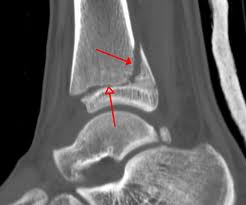Expert Witness Discredited
 An expert witness’ secret had a devastating effect on a case; the result – a discredited expert witness.
An expert witness’ secret had a devastating effect on a case; the result – a discredited expert witness.
Sally Signal was a retired head nurse of an operating room. She was used to being in charge and had a headstrong personality. She went into the hospital for signs of a possible stroke. She had a small amount of left-sided weakness but was alert and oriented. Janet Wister RN escorted her to the bathroom and instructed her repeatedly to not get up off the toilet without asking for assistance. Janet waited outside the door for Sally to call for help. When Sally was finished in the bathroom, she got up on her own without calling to Janet and fell. She fractured her ankle.
Breach of duty?
Let’s look at Janet’s responsibility to Sally. Was there a patient–nurse relationship between Sally and Janet? Yes, Sally was a patient in the hospital. Janet was an employee of the hospital and therefore had a duty to Sally. Furthermore, Janet was assigned to care for Sally and to use safety measures to protect Sally from harm.
Safety measures include interventions such as
- walking with a patient to the bathroom,
- assessing her for signs of dizziness or weakness,
- instructing her to call for help before getting up off the toilet, and
- standing outside her room in order to hear a call for help.
Falls in the bathroom raise the question of whether the patient should have been left alone in the bathroom. Was that a safe decision or a reasonable judgment under the circumstances? The analysis of cases often hinges on whether the fall was foreseeable given the circumstances and the evidence of the patient’s capabilities. Safety considerations override privacy needs.
Plaintiff and defense expert witnesses
The plaintiff attorney and defense attorney both hired nursing expert witnesses to evaluate this case and determine if Janet breached her duty. I was the defense expert witness. The plaintiff’s expert was Mary, who had a little secret. During her deposition, Mary testified that she was not working because she had multiple sclerosis. After the deposition, the attorney asked the Board of Nursing about the status of Mary’s license. This is what resulted in a discredited expert witness.
The Board of Nursing employee asked, “Would you like to know about the disciplinary action against her license?”
The defense attorney discovered that Mary had been reported to the Board of Nursing because she wrote herself 23 prescriptions for a sedative using her physician husband’s prescription pad. Her license was suspended and later restored.
The case proceeded to trial. At the trial, Janet testified that she stood outside of the patient’s bathroom door. She listened for Sally to call for help. The next thing she heard was the sound of Sally falling onto the floor. Sally required surgery to her fractured ankle and did not heal well. She was left with a limp.
 When Mary sat in the witness box, the judge allowed the defense attorney to confront Mary about her license suspension. The jury members looked shocked. Mary’s credibility was destroyed; this resulted in a discredited expert witness.
When Mary sat in the witness box, the judge allowed the defense attorney to confront Mary about her license suspension. The jury members looked shocked. Mary’s credibility was destroyed; this resulted in a discredited expert witness.
I testified that Janet followed the standard of care and here’s why. She instructed Sally to wait for help before trying to stand up. Janet made a judgment call that Sally would follow instructions. It was Sally’s decision to ignore Janet’s help that led to her injury.
Contributory negligence versus comparative negligence
In this case, the jury is asked to determine if there was a breach in the standard of care. They can determine if Sally’s actions contributed to her injury. There are two models for how U.S. state laws deal with this issue.
In pure contributory negligence, the judge or jury determines whether the plaintiff was negligent. If the plaintiff is even remotely responsible for her own injury, she cannot receive any money from the defendant. This is true even if the negligence is only 1 percent.
Comparative Negligence
Since this is a harsh standard, most states use a model called comparative negligence. In pure comparative negligence, even if the plaintiff is found to be at fault to some degree, he may still recover damages minus his degree of fault. For example, if the defendant is found to be 70% negligent, the person who suffered the injuries could recover 70% of the damages.
In modified comparative negligence, the defendant and plaintiff can be assigned a percentage of the fault. However, if the judge decides that the plaintiff is at fault to a certain degree, she cannot recover any money from the defendant. Some states put this limit at 50% and some at 51%. In the states using 50%, the plaintiff cannot be paid any money if she is believed to be 50% negligent. In the other states, the plaintiff will not be paid any money if she is 51% or more negligent.
Sally’s case was tried in a state with a 51% or more comparative negligence rule. The jury concluded that Sally contributed to her injuries by not waiting for help to get off the toilet. They assigned her to be 90% negligent. They did not award Sally any money. The plaintiff’s discredited expert witness was of no value during the case.
Pat Iyer MSN RN LNCC is CEO of The Pat Iyer Group. She is the past president of the American Association of Legal Nurse Consultants. Grab your free copy of 5 Surefire Ways to Get More Clients.

